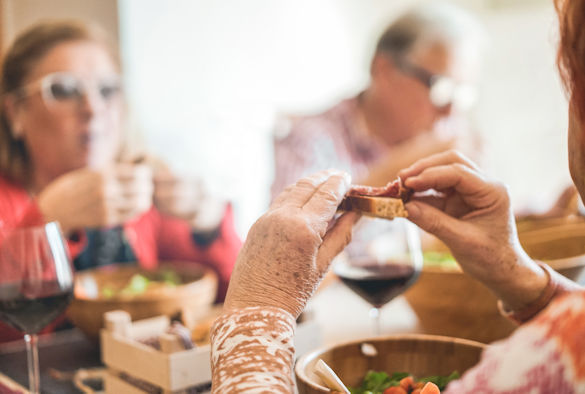
The calorie content of popular starters, sides and desserts served in UK restaurant chains is too high and they frequently exceed the energy content amount recommended for an entire meal, finds a University of Liverpool study published in BMJ Open.
England’s national public health agency recently recommended that midday and evening meals contain no more than 600 calories (kcal) each.
It is currently not mandatory for out-of-home food sector to provide the information on the energy content of meals at the point of choice. University of Liverpool researchers call for the food industry to reduce the number of calories in food products sold to the general public and for mandatory labelling of all restaurant food.
While the poor nutritional content of ‘fast food’ has been well studied, the energy content of traditional ‘full service’ restaurants, which also offer starters, sides and desserts with their main meals, has received less attention.
1009 dishes
To better understand the extent to which restaurants are contributing to overconsumption, researchers compared the calorie content of popular starters, sides and desserts from major* full service and fast-food restaurant chains in the UK. This research follows up on previous research examining the calorie content of main meals published last year.
In the study researchers, led by Dr Magdalena Muc Da Encarnação and Dr Eric Robinson from the University’s Department of Psychological Sciences, analysed the calories in 1009 dishes, 212 starters, 318 sides and 479 desserts, from 27 large UK restaurant chains (21 full-service, six fast-food).
They found an average of 488 kcal for starters, 397.5 kcal for sides and 430.6 for desserts. The percentage of dishes exceeding the recommended number of calories in a full meal (600 kcal) was 26.4% for starters, 21.7% for sides and 20.5% for desserts. Compared with fast-food chains, desserts offered at full-service restaurants were on average more calorific and were significantly more likely to exceed 600 kcal.
These findings are striking, particularly when we know that very few restaurants provide in-store information on the nutritional quality of their products. The government are currently considering making restaurants provide calorie information by law. Studies show that a mandatory menu labelling leads not only to healthier customer choices but also to a reduction in kcal content of menu items.
More responsibility needed
Dr Muc Da Encarnação, said: “The average energy content of sides, starters and desserts sold in major UK restaurants is high. One in four starters and one in five sides and desserts in UK chain restaurants exceed the recommended energy intake for an entire meal and ordering a three-course meal a person consumes on average nearly 1900kcal, which is 95% of the recommended daily consumption of kcals for women or 76% for men and that does not include any drinks ordered with the food. In addition, a large variety of kcal content within the same group of dishes, such as fries or ice-creams, makes it difficult for a customer to make an informed choice. The menu labelling is a step towards a healthier food environment.”
Dr Eric Robinson, said: “The foods we are being served across the food sector have far too many calories in them and it is not surprising there is an obesity problem in the UK. The food industry need to act more responsibly and reduce the number of calories that they’re serving. However, it’s unlikely that they will do this without pressure and the government need to get serious about obesity.”
The full paper, entitled ‘A bit or a lot on the side? Observational study of the energy content of starters, sides and desserts in major UK restaurant chains’, can be found here.
*Restaurant chains with 50 or more outlets in the UK